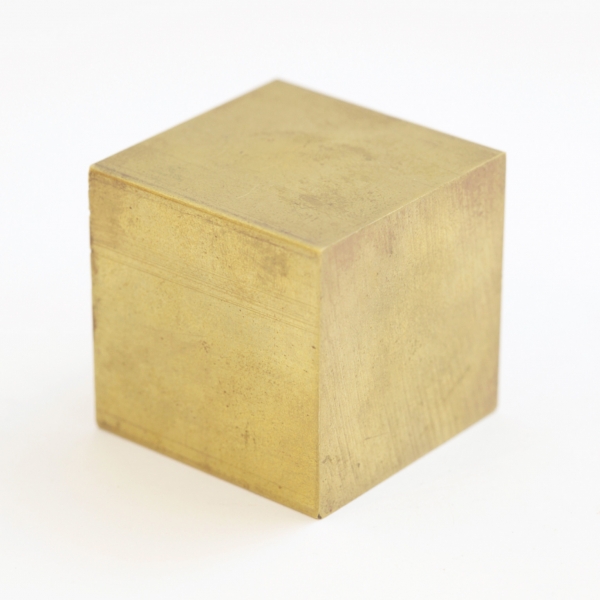
Brass is resistant to corrosion by water, fuels, and low friction so it is often made into machine components, outdoor locks, hinges, fixtures, fittings and zippers. It can be polished up to hold a golden shine, but develops a dull patina with constant touching, as demonstrated by handrails and door knobs, so it needs cleaning with specific exfoliating ointments to bring it to a gleaming finish.
Brass has wonderful acoustic properties, and has given voice to trumpets, sousaphones, bells and cymbals, even forming part of a musical genre: the brass band. Copper alloys like brass are biocidal and researchers have looked at the use of brass components in high-touch, public spaces such as hospitals to prevent the spread of infections.
This particular chunk of brass has been cut into a cube, probably from a larger, cast block. It is often formed in this way as it is relatively soft and responds well to machining (i.e. lathing, milling, filing and drilling). It is important to note that the properties of a material are variable depending on the method of production – for instance, brass is highly conductive, and machining it generates heat (if not used with a coolant), which may alter the inner structure of the brass, and the strength of the final object.
Sample ID: 412
Particularities
- State
- Solid
- Compound
- Selections
- Sound
- Categories
- Metal
- Curiosities
- Relationships
- Acoustic | Alloy | Anti-microbial | Antibacterial | Brass | Conductive | Cube | Metal | Metallurgy
Add materials you find interesting to your own selections.
Use the  button to select a material and get started.
button to select a material and get started.


